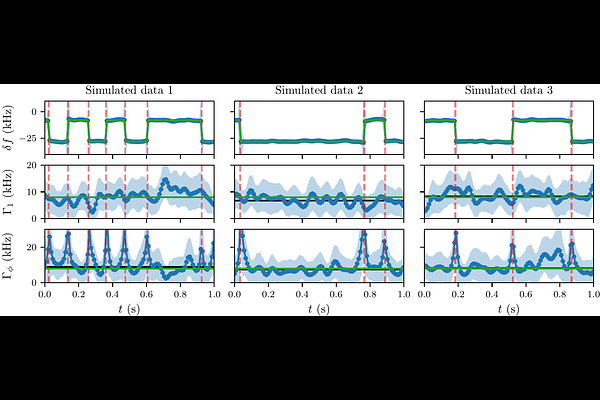Fast-tracking and disentangling of qubit noise fluctuations using minimal-data averaging and hierarchical discrete fluctuation auto-segmentation

Fast-tracking and disentangling of qubit noise fluctuations using minimal-data averaging and hierarchical discrete fluctuation auto-segmentation
Abhishek Agarwal, Lachlan P. Lindoy, Deep Lall, Sebastian E. de Graaf, Tobias Lindström, Ivan Rungger
AbstractQubit noise and fluctuations of the noise over time are key factors limiting the performance of quantum computers. Characterising them with high temporal resolution is challenging due to multiple overlapping stochastic processes such as discrete jumps and continuous drifts. Hence, experiments typically probe individual sources of fluctuations rather than concurrent fluctuations caused by multiple sources. To overcome this limitation we develop a framework comprising a noise characterisation method with minimal measurements allowing high temporal resolution, combined with a hierarchical discrete fluctuation auto-segmentation tool to disentangle the overlapping fluctuations without human intervention, enabling their characterisation and tracking over long times. We show that on transmon qubits the method can track and disentangle qubit frequency fluctuations with temporal resolution of a few tens of milliseconds over hours. This enables us to identify the origins of the fluctuations as overlapping charge parity and two-level-systems switching. Beyond insights into the fluctuation origins, our method also provides information that can be used to improve qubit calibration, error mitigation and error correction.